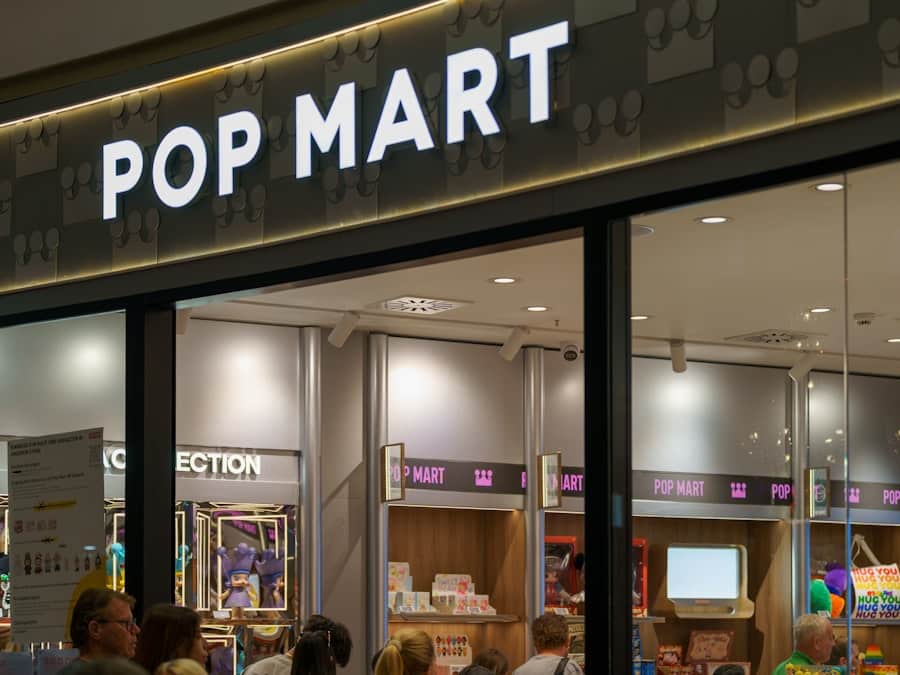The retail landscape is undergoing a profound transformation, driven by the integration of advanced technologies such as Augmented Reality (AR) and Artificial Intelligence (AI). These innovations are not merely enhancements; they are reshaping the very fabric of how consumers interact with brands and products. Smart retail stores are emerging as dynamic environments where digital and physical experiences converge, creating a seamless shopping journey that caters to the evolving expectations of consumers.
The fusion of AR and AI is at the forefront of this revolution, enabling retailers to offer personalized experiences, optimize operations, and enhance customer engagement. AR technology overlays digital information onto the physical world, allowing customers to visualize products in their own environment before making a purchase. This capability is particularly valuable in sectors such as furniture and home decor, where consumers often struggle to envision how an item will fit into their space.
On the other hand, AI leverages vast amounts of data to analyze consumer behavior, predict trends, and automate processes. Together, these technologies create a smart retail ecosystem that not only meets but anticipates customer needs, ultimately driving sales and fostering brand loyalty.
Key Takeaways
- AR and AI are revolutionizing the retail industry by creating smart retail stores that offer enhanced customer experiences and optimized inventory management.
- AR enhances customer experience by providing interactive product information, virtual try-on experiences, and personalized recommendations, leading to increased customer satisfaction and loyalty.
- AI plays a crucial role in optimizing inventory management by analyzing data to predict demand, prevent stockouts, and reduce overstock, ultimately improving operational efficiency and profitability.
- AR and AI work together to personalize marketing strategies by analyzing customer data, creating targeted promotions, and delivering personalized content, resulting in higher conversion rates and increased sales.
- The integration of AR and AI in smart retail stores streamlines checkout processes by enabling contactless payments, reducing waiting times, and improving overall customer satisfaction.
The Role of AR in Enhancing Customer Experience
Augmented Reality has emerged as a powerful tool for enhancing customer experience in retail settings. By providing immersive and interactive experiences, AR allows customers to engage with products in ways that were previously unimaginable. For instance, furniture retailers like IKEA have developed AR applications that enable customers to visualize how a piece of furniture would look in their home.
Users can point their smartphones at a designated area in their room, and the app will superimpose a 3D model of the furniture, complete with accurate dimensions and colors. This not only helps customers make informed decisions but also reduces the likelihood of returns due to mismatched expectations. Moreover, AR can enhance the in-store experience by providing additional information about products.
Retailers can implement AR-enabled displays that allow customers to scan items with their smartphones to access detailed product descriptions, customer reviews, and even instructional videos. This level of interactivity not only enriches the shopping experience but also empowers consumers with knowledge, making them feel more confident in their purchasing decisions. As a result, AR not only captivates customers but also fosters a deeper connection between them and the brand.
The Role of AI in Optimizing Inventory Management

Artificial Intelligence plays a crucial role in optimizing inventory management within smart retail stores. Traditional inventory management systems often rely on historical sales data and manual processes, which can lead to inefficiencies and stock discrepancies. In contrast, AI-driven systems utilize machine learning algorithms to analyze real-time data from various sources, including sales patterns, seasonal trends, and even social media sentiment.
This enables retailers to forecast demand more accurately and adjust inventory levels accordingly. For example, Walmart employs AI algorithms to predict which products will be in high demand based on factors such as weather patterns and local events. By analyzing this data, Walmart can ensure that its shelves are stocked with the right products at the right time, minimizing both overstock and stockouts.
Additionally, AI can automate reordering processes by triggering alerts when inventory levels fall below a certain threshold. This not only streamlines operations but also reduces carrying costs associated with excess inventory. As retailers increasingly adopt AI for inventory management, they can achieve greater efficiency and responsiveness to market demands.
How AR and AI Work Together to Personalize Marketing Strategies
The integration of AR and AI is revolutionizing marketing strategies in the retail sector by enabling hyper-personalization. AI algorithms analyze customer data to identify preferences, behaviors, and purchasing patterns, while AR provides an engaging platform for delivering personalized content. For instance, retailers can use AI to segment their customer base and tailor marketing messages based on individual preferences.
When combined with AR experiences, this personalization becomes even more impactful. Consider a cosmetics retailer that utilizes AI to analyze a customer’s past purchases and online behavior. When the customer visits the store, they could be greeted with an AR experience that showcases products specifically suited to their skin type or makeup preferences.
By scanning their face with an AR-enabled mirror, the customer could see how different makeup products would look on them in real-time. This level of personalization not only enhances the shopping experience but also increases the likelihood of conversion as customers feel understood and valued by the brand.
The Impact of AR and AI on Streamlining Checkout Processes
The checkout process is often a pain point for customers in retail environments, leading to frustration and abandoned carts. However, the integration of AR and AI technologies is streamlining this process significantly. AI-powered systems can analyze customer behavior at checkout to identify bottlenecks and optimize staffing levels accordingly.
For instance, if data shows that certain times of day consistently lead to long lines, retailers can adjust staffing schedules to ensure adequate coverage during peak hours. AR also plays a role in enhancing the checkout experience by providing customers with interactive payment options. Some retailers have implemented AR-enabled kiosks that allow customers to scan items as they shop, automatically adding them to a virtual cart.
When it’s time to check out, customers can simply review their selections on the screen and complete their purchase without waiting in line. This not only speeds up the checkout process but also creates a more enjoyable shopping experience by reducing friction points.
Implementing AR and AI for Enhanced Security and Loss Prevention

As retail environments become increasingly digitized through AR and AI technologies, security and loss prevention have become paramount concerns for retailers. Traditional security measures may not be sufficient in addressing modern challenges such as shoplifting or fraud. However, AI-driven surveillance systems can analyze video feeds in real-time to detect suspicious behavior or anomalies within the store environment.
For example, if a customer is seen lingering near high-value items without making a purchase, the system can alert security personnel for further investigation. AR can also enhance security measures by providing employees with real-time information about potential threats or incidents within the store. For instance, an AR-enabled device could overlay information about known shoplifters or alert staff to unusual activity detected by surveillance cameras.
By combining these technologies, retailers can create a more secure shopping environment while also protecting their assets.
The Future of Smart Retail Stores with AR and AI Integration
The future of smart retail stores is poised for remarkable advancements as AR and AI technologies continue to evolve. As these technologies become more sophisticated, retailers will be able to create even more immersive shopping experiences that blur the lines between physical and digital realms. For instance, we may see the emergence of fully interactive stores where customers can engage with products through AR interfaces while receiving personalized recommendations powered by AI.
Moreover, advancements in machine learning will enable retailers to predict consumer behavior with unprecedented accuracy. This could lead to dynamic pricing strategies that adjust in real-time based on demand fluctuations or even personalized promotions delivered directly to customers’ smartphones as they shop. The integration of AR and AI will not only enhance operational efficiency but also foster deeper connections between brands and consumers.
Case Studies of Successful Smart Retail Stores Utilizing AR and AI
Several retailers have successfully implemented AR and AI technologies to enhance their operations and customer experiences. One notable example is Sephora, which has integrated AR into its mobile app through a feature called Virtual Artist.
The app uses AI algorithms to recommend products based on individual preferences and skin tones, creating a personalized shopping experience that has significantly boosted online sales. Another example is Lowe’s Home Improvement, which has embraced both AR and AI to improve customer engagement in-store. Their “Lowe’s Vision” app uses AR technology to help customers visualize how appliances will fit into their homes while providing product information through an interactive interface.
Additionally, Lowe’s employs AI-driven analytics to optimize inventory management and enhance supply chain efficiency.
As these technologies continue to advance, we can expect even more groundbreaking applications that redefine the retail experience for consumers worldwide.
In the rapidly evolving landscape of retail technology, the integration of Augmented Reality (AR) and Artificial Intelligence (AI) is revolutionizing the way smart retail stores operate, offering enhanced customer experiences and streamlined operations. A related article that delves into the broader spectrum of technological advancements in 2023 is The Best Tech Products 2023. This article provides insights into the top innovations across various tech sectors, highlighting how cutting-edge products are shaping consumer interactions and expectations. By exploring these advancements, retailers can gain a comprehensive understanding of the tools available to create more engaging and efficient shopping environments.
FAQs
What is AR and AI in the context of smart retail stores?
AR (Augmented Reality) is a technology that overlays digital information such as images, videos, or 3D models onto the real world, typically viewed through a smartphone or AR glasses. AI (Artificial Intelligence) refers to the ability of machines to perform tasks that typically require human intelligence, such as visual perception, speech recognition, and decision-making.
How are AR and AI being used in smart retail stores?
AR and AI are being used in smart retail stores to enhance the customer experience, improve operational efficiency, and gather valuable insights. For example, AR can be used to provide virtual try-on experiences for clothing and accessories, while AI can be used to analyze customer behavior and preferences to personalize marketing and product recommendations.
What are the benefits of using AR and AI in smart retail stores?
The benefits of using AR and AI in smart retail stores include improved customer engagement, increased sales, reduced operational costs, and better decision-making based on data-driven insights. These technologies also enable retailers to offer personalized experiences and stay competitive in the rapidly evolving retail landscape.
Are there any challenges or limitations to using AR and AI in smart retail stores?
Some challenges and limitations of using AR and AI in smart retail stores include the initial investment required for implementing these technologies, the need for robust data privacy and security measures, and the potential for technical glitches or user adoption barriers. Additionally, ensuring that these technologies enhance the overall customer experience without replacing human interaction is a key consideration for retailers.

